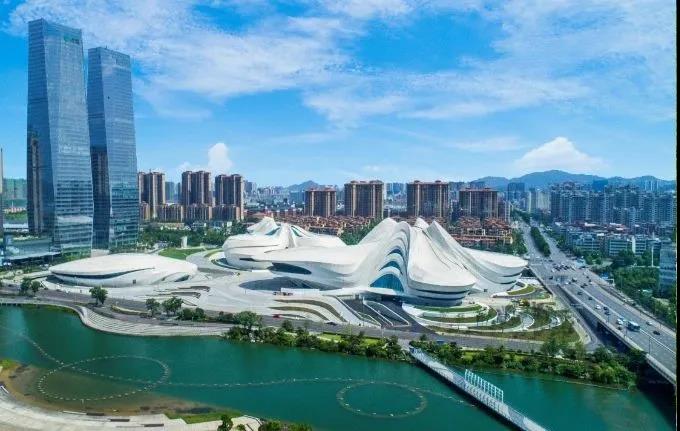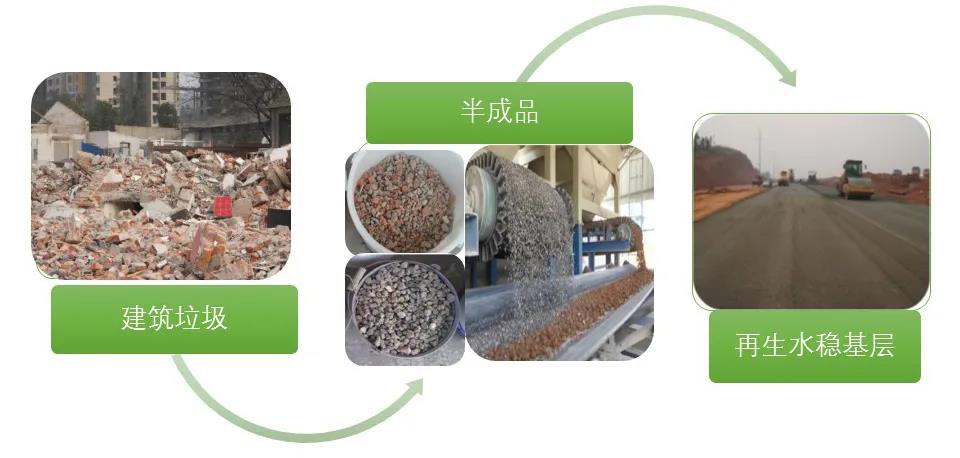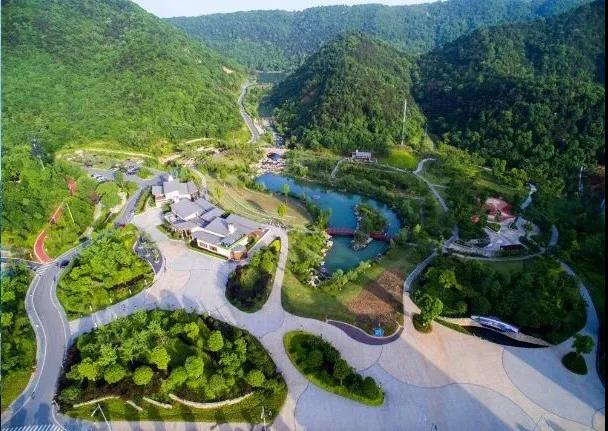


Committed to Sustainable Cities and Human Settlements for All

In Special Consultative Status with ECOSOC
Abstract: Located at the core of Meixi Lake area in Hunan Xiangjiang New District, Changsha Meixi Lake New Town covers an area of 7.6 square kilometers and a total construction area of about 10.4 million square meters. Taking "mountain, water, people and city" as its core elements and low-carbon sustainable development as its guiding principle, it aims to become a sustainable low-carbon town. This article focuses on the planning features of Meixi Lake New Town in terms of ecological environment protection, comprehensive utilization of water resources, smart cities, green transportation, and solid waste treatment. At the same time, it introduces the project’s performance and progress on relevant eco-city indicators and the corresponding measures. The guiding philosophy of "ecology, energy efficiency, innovation, science and technology" has been carried through the whole process of the project, including "planning, design, technology, construction, operation". Besides, new ideas, systems, and mechanisms have been invented to integrate the resources in the new town, which has laid a good foundation for building a green and ecological new city.
1. Introduction
Located at the core of the Xiangjiang New Area in Changsha, Meixi Lake New Town covers an area of 7.6 square kilometers, with a total construction area of approximately 10.4 million square meters for residential and commercial buildings and R&D and supporting facilities, a 3,000-mu lake area and the 4,360-mu Taohualing Scenic Area. At present, with "mountains, water, people and architectures" as its core elements and low-carbon sustainable development as its core concept, the Town has begun to show the charm of a city for the future to the world.

Scenery around the Lake
Since its construction in March, 2009, the Town has been approved as "National Ecological Demonstration City" and "National Pilot City for Smart City", and awarded "China Habitat Environment Prize 2014", Global Human Settlements Award on Planning and Design and other national and international honors.

2. Charm of the New Town
2.1 Ecological Protection
As one of the first
recipients of "National Ecological Demonstration City" in China, the
Town boasts an original ecological conservation rate of 100% since its public
supporting facilities have been integrated with the natural environment,
including the mountains, lakes, rivers and vegetation, thanks to the
high-standard city planning. Six eco-parks, together with an eco-route of over
15 kilometers, has been built around the lake, with a total area of 8,300 mu. In addition, the lake, coupled with
high coverage of cool roofs and full-range shading for slow-moving roads, has
created an excellent microclimate environment for the area.

Meixi Lake
2.2 Comprehensive Utilization of Water Resources
To ensure the water quality of Meixi Lake, the water quality of rivers, lakes, and canals in the Town were improved, indicating that the water-conservancy project of the lake has realized the goals of water resources utilization, flood prevention and storage, eco-landscape building and environmental protection. At the same time, guided by the sponge city concept, rainwater is fully collected for road watering and landscape irrigation while mountain water from Taohualing is used for lake water supplementation, thus saving water resources and urban operating costs.
2.3 Smart Meixi Lake
Focusing on the positioning characterized by smartness, safety, health, green and vigor for the urban construction goal of a new district with such features, the Town has gradually provided smart networks, smart transportation, public information platforms, citizen convenience cards, smart city operation centers and other services to continuously improve the living environment and the quality of life.

WIFI Hotspots in Public Areas
2.4 Green Transportation
Based on the principle of TOD (Transit Oriented Development Model), green transportation has been set up in the form of mixed transportation such as subways, buses and bicycle rental systems. A case in point is the bicycle lanes around Meixi Lake and Taohualing where the "2012 Jinmao Meixi Lake Cup National Road Cycling Championship—Xidesheng Cup International Bicycle Invitational Tournament around Xiangjiang River, Changsha, China" was held.
2.5 Solid Waste Treatment and Utilization
To reduce the waste discharge of various projects, all new projects are required to meet the green construction standards and perform according to a customized plan or scheme for green construction for less construction waste. At the same time, in accordance with the concept of regeneration, abandoned building cement, concrete and brick slag during the urban transformation process, coupled with recycled water-stable materials, were processed into recycled aggregate materials for roadbed and wall construction.

Solid Waste Recycling
The city was planned and constructed fully in accordance with green building standards and in a people-oriented approach to improve residents' engagement in the environment. At the same time, a green campus culture has been advocated so that on campus, students are affected and nurtured by green culture in a subtle way and gradually prompted to motivate their families and the society to improve Meixi Lake's green culture. At the same time, the general affairs office, sub-district office, and residents committee have urged the establishment of a sound environmental protection system. Jinmao, Meixi Lake and other big and responsible real estate companies and all sectors of society have voluntarily co-organized activities on the theme of environmental protection to create green communities.

City Island
3. Implementation of the Indicator System for Ecological Demonstration City
In order to achieve the construction goal, an ecological indicator system, including eight categories and 48 index items, has been established. Since the city applied for the National Ecological Demonstration City in 2012, the construction has been closely centered on various targets. As a result, it was accepted as an eco-city in September 2018. The total per capita carbon emission of the Town is 4.3 tons per year, meeting the expected target of 4.3 tons annually. The indicator system of the Town’s core area includes 20 key indicators and 28 guiding indicators, only eight of which failed to meet the expected targets.
Implementation of Eco-Town Index System
|
Main category |
Classification |
Index item |
Compliance index |
Actual index |
Compliance |
|
Overall index |
Carbon emissions per capita (t / year) |
4.3 |
4.3 |
√ |
|
|
City planning |
site Development |
Proportion of mixed-use neighborhoods |
70% |
100% |
√ |
|
Underground space development rate |
35% |
275% |
√ |
||
|
Block development |
Block scale compliance rate (100 ~ 250 × 100 ~ 250) |
80% |
62.18% |
Substandard |
|
|
The ratio of the building height along the street to the street width is larger than 1: 2 |
40% |
100% |
√ |
||
|
Public facilities |
Municipal pipe network penetration rate |
100% |
100% |
√ |
|
|
Barrier-free facilities rate |
100% |
100% |
√ |
||
|
Architectural planning |
Green building |
Green building ratio |
100% |
100% |
√ |
|
Building materials |
Fully-furnished homes |
50% |
8.25% |
Substandard |
|
|
Local building materials ratio |
70% |
91.65% |
√ |
||
|
Green construction |
Green construction ratio |
100% |
100% |
√ |
|
|
Building management |
Smart building ratio |
100% |
100% |
√ |
|
|
Energy planning |
Energy efficiency in buildings |
Energy efficiency in buildings (energy saving rate ≥65%) |
65% |
/ |
Substandard |
|
Energy consumption per unit area (public buildings ≤100 kWh / m2·a, residential buildings ≤40 kWh / m2·a) |
≤100/40 |
92.63/38.93 |
√ |
||
|
Monitoring coverage of public building energy consumption |
100% |
100% |
√ |
||
|
Use of renewable energy |
Renewable energy utilization rate |
10% |
9.21% |
Substandard |
|
|
District energy plan |
Heating and cooling ratio in public buildings |
45% |
30.08% |
Substandard |
|
|
Public smart grid coverage |
29% |
100.00% |
√ |
||
|
Water resources planning |
Recycling of water resources |
Non-traditional water source utilization |
10% |
7.84% |
Substandard |
|
Comprehensive runoff coefficient |
≤0.54 |
0.54 |
√ |
||
|
Water conservation |
Building water saving rate (public construction ≥10%, residential construction ≥9%) |
10%/9% |
10% |
√ |
|
|
Leakage rate of water supply network |
≤8% |
≤8% |
√ |
||
|
Itemized metering of building water consumption |
100% |
100% |
√ |
||
|
Eco-environment planning |
Regional natural environment |
Original ecological preservation rate |
100% |
100% |
√ |
|
Environmental noise compliance |
100% |
100% |
√ |
||
|
Surface water quality (not below Class III) |
Class III |
Class III |
√ |
||
|
Microclimate environment |
Wind speed in pedestrian areas (≤5 m / s) |
≤5 |
≤5 |
√ |
|
|
Daily average temperature increase triggered by heat island warming (≤1.3 ℃) |
≤1.3 |
≤1.3 |
√ |
||
|
Landscape environment |
Native plant index |
80% |
80.57% |
√ |
|
|
Cool roof coverage |
50% |
81.97% |
√ |
||
|
Slow-road shading rate |
80% |
100% |
√ |
||
|
Traffic planning |
Public transit |
Proportion of bus stops within 300 meters |
90% |
97.63% |
√ |
|
Slow roads (sidewalks/bicycle lanes) |
Width of Slow roads (sidewalks/bicycle lanes) (≥2m) |
2 |
2.5 |
√ |
|
|
Number of bicycle parking spaces (public construction ≥0.1 parking spaces / person, residential construction ≥0.3 parking spaces / person) |
0.1/0.3 |
0.1/0.41 |
√ |
||
|
Clean energy transportation |
Proportion of clean energy buses |
30% |
30% |
√ |
|
|
Percentage of priority parking spaces |
10% |
10% |
√ |
||
|
Solid waste planning |
Waste disposal |
Per capita domestic garbage/d (≤0.8 kg/person•d) |
≤0.8 |
0.71 |
√ |
|
Construction waste disposal (≤350 t/10,000m2) |
≤350 |
/ |
Substandard |
||
|
Waste sorting |
Compliance rate of collection of classified refuses |
100% |
100% |
√ |
|
|
Recycling of garbage (domestic waste ≥50%; construction waste ≥30%) |
50%/30% |
50%/30% |
√ |
||
|
Waste treatment and utilization |
Harmless waste treatment rate |
100% |
100% |
√ |
|
|
Green culture planning |
Urban management |
Proportion of communities with informationized management and services |
100% |
100% |
√ |
|
Green community building |
Green community building rate |
100% |
100% |
√ |
|
|
A sense of green |
80% |
80% |
√ |
||
|
Number of green schools (kindergartens, elementary schools) |
7 |
17 |
√ |
||
|
Proportion of green commuting (public transport ≥40%, slow-moving traffic ≥40%) |
40%/40% |
80% |
√ |
||
|
Housing and employment balance index |
15% |
67% |
√ |
||
|
Carbon metering |
Carbon emissions coverage |
100% |
/ |
Substandard |
|

4. Challenges and Solutions
4.1 System Improvement
The characteristics of green, ecological and sustainable development are of great significance to improve the quality of urban construction. At the same time, the construction of an eco-town, full of difficulties and challenges, has prioritized planning, management and deployment. As the administrative body of the construction, Hunan Xiangjiang New District Management Committee (formerly the Changsha Dahexi Pilot Area Management Committee) has made the following important decisions to ensure a smooth construction.
(1) Formulating a high-standard guidance plan for Meixi Lake New Town;
(2) Identifying the overall goal and annual construction task;
(3) Realizing a closed-loop management of green buildings during the entire process from construction to operation;
(4) Strengthening technical guidance for green operation;
(5) Incorporating green and humanistic ideas and advocating energy-saving behaviors;
(6) Increasing fund subsidies to ensure well-operated infrastructure.
4.2 Standards Establishment
Before applying for the
label of National Green Ecological Demonstration City, authorities of Changsha,
Dahexi Pilot District and Meixi Lake New Town respectively formulated 29
technical standard documents, including "Technical Standards of Changsha Resource-Conserving
and Environment-Friendly Society Construction", "Guidance
Document of Dahexi Development and Construction", and "Related Local
Technical Standards of Building a Green Meixi Lake New Town". At the same
time, during the construction, in order to better guide the implementation of
the green ecological indicator system, the management committee of Hunan
Xiangjiang New District organized annual project declarations with more than 10
projects underway. It is the study of these standards and topics that has
provided many technical support for the construction, becoming the cornerstone
of the Town's achievements and a strong guarantee for its later development.
4.3 Follow-up Development
Energy planning, utilization
of non-traditional water sources and full decoration - all of them are often
difficult obstacles in the construction of eco-cities. The management committee
carefully analyzed the reasons of failing to meet the eight indicators,
proposed a series of solutions and planned to achieve the construction goals
through policy implementation and technology application in the second phase of
the development.
Analysis of Eco-Town Substandard Indicators
|
No. |
Index |
Index characteristics |
Reasons |
Solutions |
|
1 |
Block scale compliance rate ≥80% (300 × 300) |
Guiding |
Substandard |
Developers have been advised to plan larger areas reasonably to provide residents with convenient living facilities. |
|
2 |
Well-furnished residence ratio ≥50% |
Guiding |
8.25%, Substandard. No mandatory policy was implemented in the early stage of construction. |
No.37 Office Announcement [2018] of the Changsha Government has clearly stated that the delivery rate of fully furnished commercial dwellings in the city should not be lower than 70%. |
|
3 |
Energy saving rate designed for buildings ≥65% |
Controllability |
Substandard. The corresponding mandatory standards were not implemented in the early stages of construction. |
Hunan Province has implemented a new design standard for energy-saving buildings (≥65%). |
|
4 |
Renewable energy utilization rate ≥10% |
Controllability |
Substandard. Settlements were mainly high-rise buildings incompatible with renewable energy technology in the core area. |
It is recommended to improve project review and supervision; pro renewable-energy technology projects should be implemented as per technical plans and construction procedures. |
|
5 |
Heating and cooling ratio in public buildings≥45% |
Guiding |
Substandard. According to experts, the energy station in the core area may affect the ecosystem of the lake, so the plan had to be adjusted. |
In Xiangjiang New District, we plan to add a regional energy station in the second phase of the construction, covering a total area of 26 square kilometers. After the expansion, it is expected that the regional energy supply coverage of the first and second (short-term) phases will reach above 64.4%. |
|
6 |
Non-traditional water source utilization rate ≥10% |
Guiding |
7.84%, Substandard. The site of water recycling plant was re-selected, delaying the process. |
The Second-phase construction of the plant has begun. It is expected to reach the target of 10% after completion. |
|
7 |
Construction waste disposal (≤350 t/10,000㎡) |
Guiding |
Substandard. Changsha did not classify the sources of construction waste. |
Changsha has only counted the annual amount of construction waste disposal, but has not categorized the sources of it. It is recommended to strengthen the construction management of new buildings. |
|
8 |
Carbon emission monitoring rate reaching 100% |
Guiding |
Substandard. Only large public buildings were under energy consumption monitoring. |
Based on the development of systems such as energy consumption monitoring and smart cities, a comprehensive metering system will be established during the operation period to improve the Town's comprehensive management ability. |
5. Social, Economic and
Environmental Benefits
Since March 2009, 55 billion yuan has been funneled to the primary and secondary land development.
High-quality cultural, educational, medical, commercial and technological
supporting projects have been introduced; a comprehensive ecological functional
area with financial and corporate headquarters, technological innovation
centers, cultural and creative services, tourism and leisure, and ecological
residence has been built. For example, Lanxiu City, International R&D
Center, International Culture and Art Center, Taohualing Scenic Area, City
Island, North-South Green Axis, etc., have become important hubs for the
integration of life, work, production and entertainment in the Town.
In addition, breakthroughs
have been made in building a resource-conserving and environment-friendly
society. Six major parks with a total area of more than 8,300 mu and an
ecological green axis with a total length of over 15 kilometers have been built
and open for the public. Energy-saving technologies have been fully tapped into
for green architectures and an initial green travel system, marking a full
launch of smart city construction.
The Town has been witnessing
a continuous development of industries and the society, shaping the image of
new urban center of Changsha and even of the future.
6. Summary
As an international, ecological and sustainable new
town building on the innovation of science and technology, Meixi Lake New Town
aims to introduce and develop green, recyclable and low-carbon development
philosophy and actively implements the national policy of energy conservation
and emissions reduction, to build an ecological pattern featuring less energy
and emissions together with enterprises, the market and the society as a whole.
Guided by the concepts of “ecology, energy
conservation, innovation and technology” — the leading philosophy for
development and construction, novel ideas, systems and mechanisms have been
introduced to integrate resources for the overall process, including planning,
designing, technology application, construction and operation, laying a good
foundation and orientation for the development of a new green town while
providing valuable experience for the advancement of ecological cities around
the globe.
Article and photos by Mao
Wangping, Changsha Jinmao Real Estate Co., Ltd., and Xie Tao, Hunan Bohong
Energy Saving Technology Co., Ltd., 2017
Copyright © Global Forum on Human Settlements (GFHS)
